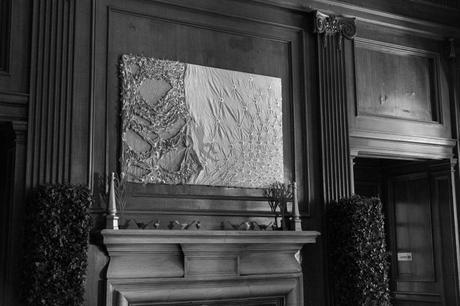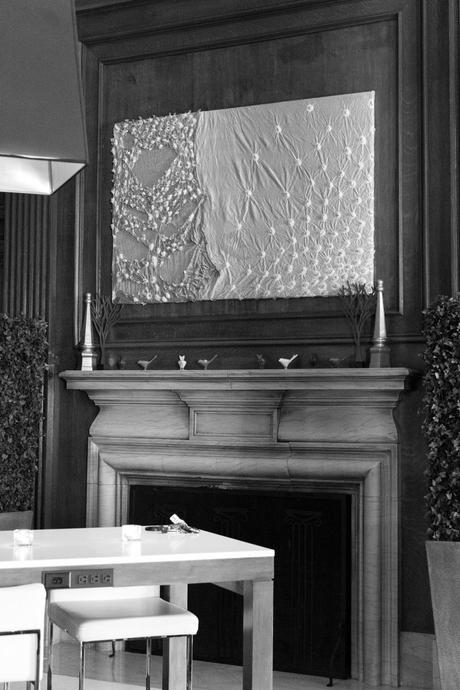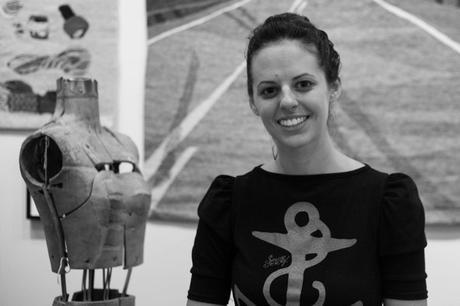
Do you remember going to the carnival as a child and getting so excited for the balloon man? Forget the cotton candy, I was always amazed how the man or woman with the brightly painted face took a simple balloon and with a couple of twists, turns, and contortions, transformed it into a giraffe, a monkey, or if you were lucky, a hat (never underestimate the power of a good accessory). The ability to remove an object from its original use and assign it another is a skill. This is what Sara does. Co-founder of Paradigm Gallery + Studio, she’s a fiber artist who started out crocheting, switched to corset making, and then got into fabric manipulation. Her training in many fields of sewing have caused her skills to bubble up and culminate into a unique and rare talent. Using her hands and intense processes, she gives fabric a new form, and in turn, a new life.
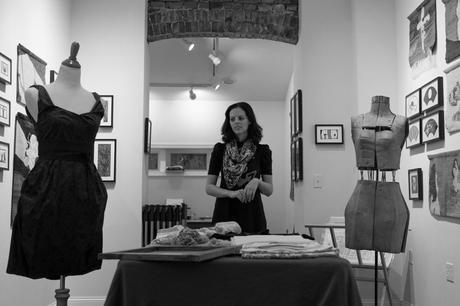

Hi, my name is Sara McCorriston and I started crocheting before I started sewing. I had a white, whicker rocking chair when I was 3-years-old that I would sit in while hand crocheting next to my Nana (on my dad’s side). She later taught me more difficult crocheting techniques, which led me to more complex projects like making coasters, Christmas ornaments, and things similar. My grandma on my mom’s side was an amazing seamstress and as inspiration, or a little push to get her granddaughter into sewing, she showed me the garments she made for my mom and herself from the 1940s, 1950s, and 1960s. Jackets, dresses… they’re gorgeous!
I was exposed to the world of pattern making and sewing and dabbled in it when I was younger, but I really fell in love with it in college. I was a costume design major at The University of the Arts and I initially thought I wanted to do set design. But while I was working on a period piece project, I learned how to construct and pattern a corset and that’s when my passion lit up. I continued making corsets for 5 or 6 years after that, sewing costumes for theater and dance as well as having an internship at Delicious Corsets.

I moved away from corsets making and found a new love, fiber arts. During my senior year of college, I worked on a show that was about the artwork of Henry Darger and I screen printed the costumes for the Vivian girls with images that looked like Darger paintings. The idea of printing onto fabric before constructing it really appealed to me. I took the concept a couple steps further by screen printing on canvas and then embroidering on top of it. This brought me into fabric manipulation and the artist I am today. I consider myself a fiber artist that is constantly trying to test the limits of what fabric can do. Silk is a constant study of mine. I use degumming and dye processes to get silk to take different shapes such as rocks, macadamia nuts, and bottle caps. It’s a tedious process and involves getting the silk to soften in some spots, stiffen in others, and in the end, when the object is removed from being wrapped around the silk, be a replicate of the object but in fabric form. These works of art are either displayed on a canvas or as a free standing piece.
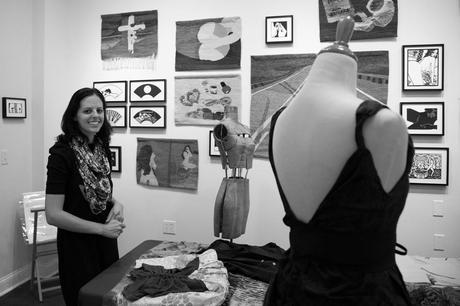


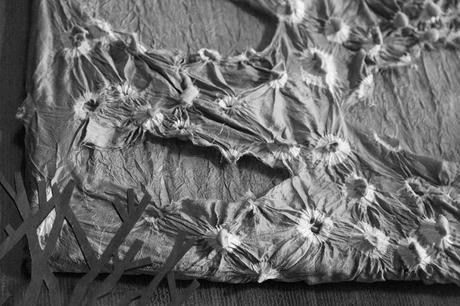

Both garment sewing and fiber arts appeal to me, but each appeals to a different side of my personality. On the one hand, there’s corset making, where the difference between a piece fitting and not fitting is 1/16th of an inch. In this world, there is a lot of problem solving – finding the solution and fixing it. On the other hand, there’s fiber arts, where the end result is always up in the air. When I put fabric on canvas or around an object, I never know how it’s going to react, what size it will be after I stretch it, or what texture it will take. Chance plays a big part in fiber arts for me and this allows me to go wild. The strict nature of making a corset appeals to the mathematical and orderly side of my brain whereas fiber arts appeals to the free spirit within me. My two sewing personas complement and balance each other out and it’s really cool how the two mingle within me.

I have 2 mentors. Mark Mariani, a Philadelphia-based costume designer, not only taught me the basics of pattern making, but once I understood the foundations, he allowed me to take off with what I had learned. What’s unique about him is that even though he works on costumes, where the importance is on the exterior of the garment, he pays attention to the interior details and finishing. He respects garments.
Chrissy Day, who is a dyeing guru, was my second mentor and the person who got me into fiber arts. She taught me all the rules and then how to properly break them.

I really love using an industrial, but I don’t own one, and whenever I’m at a studio that has one, I’m all over that machine! I own a Viking, which is my primary sewing machine for sewing wovens, and I have a Babylock, which I use for dancewear. I have no complaints about my Viking – at the height of my sewing, I was using it 40+ plus hours a week. I put that machine through hell and it never quit on me!
